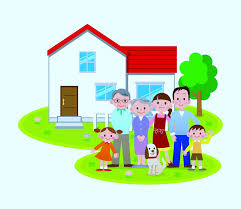In today’s evolving housing landscape, multi-generational living is becoming increasingly popular. More families are choosing to live together under one roof, combining grandparents, parents, and children in a single household. This growing trend offers various benefits, from financial savings to stronger family bonds, but it also presents unique challenges. If you’re considering this option, let’s explore why multi-generational living is on the rise and how to determine if it’s a good fit for your family.
What is Multi-Generational Living?
Multi-generational living refers to households where multiple generations—such as grandparents, parents, and adult children—live together in one home. This arrangement has gained popularity in recent years due to economic factors, caregiving responsibilities, and cultural influences. Recent studies show a sharp increase in the number of multi-generational households, signaling a shift in how modern families are approaching living arrangements.
Why is Multi-Generational Living Becoming a Trend?
Several factors have contributed to the rise of multi-generational living:
- Financial Pressures: With the rising cost of housing, utilities, and everyday expenses, many families find it more economical to live together. Sharing costs allows family members to save on rent or mortgage, groceries, and other bills, making homeownership more affordable.
- Elderly Care and Support: As the population ages, more families are choosing to take care of elderly parents at home instead of relying on nursing homes or assisted living facilities. This ensures that older family members receive personal care in a familiar environment while reducing long-term care costs.
- Family Bonding: Multi-generational households encourage closer relationships between grandparents, parents, and children. Grandparents can actively participate in raising grandchildren, while adult children can offer support to aging parents.
- Cultural Traditions: In many cultures, multi-generational living has long been a way of life. As these traditions continue to influence society, families from diverse backgrounds are embracing the practice of living together across generations.
Key Benefits of Multi-Generational Living
There are many reasons why multi-generational living is appealing to families:
- Cost Savings: Combining finances and sharing household expenses can significantly reduce the financial strain on individual family members. This makes it easier to manage mortgages, utility bills, and daily living costs.
- Shared Responsibilities: Dividing household duties like cooking, cleaning, and caregiving between family members lightens the load for everyone. This collaborative environment can create a smoother, less stressful routine.
- Built-in Support: Family members living together provide emotional and practical support in times of need. Whether it’s help with childcare or support during an illness, a multi-generational household offers a built-in network of care.
- Learning Across Generations: Multi-generational homes create opportunities for learning and sharing. Children can benefit from their grandparents’ wisdom, while older family members can stay engaged by learning about new technologies and trends from younger generations.
Common Challenges of Multi-Generational Living
While multi-generational living has its advantages, it also comes with potential challenges:
- Privacy Issues: Sharing a home with multiple generations can limit personal space. It’s important to establish clear boundaries to ensure everyone has privacy and personal time.
- Lifestyle Differences: Each generation has different routines, values, and habits. These differences can sometimes lead to conflicts if expectations aren’t discussed and managed from the start.
- Financial Tensions: Although sharing expenses can ease financial pressure, disagreements about money can arise if financial contributions and expectations aren’t clearly defined. Open communication is crucial to maintaining harmony.
- Family Dynamics: Living with extended family members can intensify existing family dynamics or create new tensions. It’s important to have conflict resolution strategies in place to handle disagreements in a healthy way.
Is Multi-Generational Living Right for Your Family?
Deciding whether multi-generational living is right for your family depends on your unique circumstances. Here are some important questions to consider before making the leap:
- Can everyone agree on boundaries? It’s essential to set clear rules about privacy, household duties, and finances to avoid future conflicts.
- Is everyone on board? Ensure that all family members are comfortable with the idea of living together. Open, honest conversations about expectations and potential challenges are key to a successful arrangement.
- Do you have enough space? Make sure your home has enough room to accommodate everyone comfortably. This might involve creating separate living areas or upgrading your current home to meet the needs of older family members.
- Are you prepared to manage conflicts? Living in a multi-generational household will require patience and effective communication. Be ready to address disagreements and find compromise when needed.
The growing trend of multi-generational living offers a range of benefits, from financial savings to deeper family connections. However, it’s important to carefully consider whether this lifestyle is suitable for your family’s needs. By weighing the advantages and challenges, setting clear expectations, and fostering open communication, multi-generational living can be a rewarding experience that strengthens your family bonds.
If you’re considering making this transition, take time to assess your family’s dynamics and create a plan that ensures everyone’s comfort and well-being. Multi-generational living could be the solution that enhances your family’s quality of life and brings you closer together.


